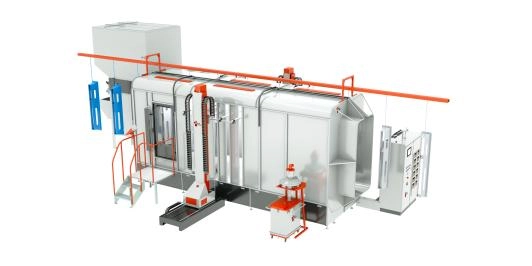Content Menu
● Understanding Vibrating Sieves
>> What is a Vibrating Sieve?
>> How Does a Vibrating Sieve Work?
● Benefits of Using a Vibrating Sieve
>> 1. Enhanced Product Quality
>> 2. Increased Efficiency
>> 3. Reduced Material Waste
>> 4. Prevention of Clogging
>> 5. Versatility Across Industries
>> 6. Improved Hygiene and Safety
>> 7. Customization Options
>> 8. Cost-Effectiveness
● Applications of Vibrating Sieves
>> Food Industry
>> Pharmaceutical Industry
>> Chemical Manufacturing
● Conclusion
>> Frequently Asked Questions
In the world of manufacturing, especially in industries dealing with powders such as food, pharmaceuticals, and chemicals, maintaining high-quality standards is paramount. One of the most effective tools for ensuring powder quality is the vibrating sieve. This article explores the top benefits of using a vibrating sieve for powder quality control, detailing how it enhances efficiency, product quality, and operational effectiveness.

Understanding Vibrating Sieves
What is a Vibrating Sieve?
A vibrating sieve is a mechanical device that uses vibration to separate materials based on size. It consists of a screen or mesh that allows smaller particles to pass through while retaining larger ones. This process is crucial in various industries where the purity and consistency of powders are essential.
How Does a Vibrating Sieve Work?
The operation of a vibrating sieve involves the application of controlled vibrations to the screen. These vibrations cause the powder to move across the surface of the sieve, allowing particles to be sorted by size. The design of the sieve can vary, with different mesh sizes and configurations tailored to specific applications.
Benefits of Using a Vibrating Sieve
1. Enhanced Product Quality
One of the primary advantages of using a vibrating sieve is the significant improvement in product quality. By effectively removing oversized particles and contaminants, manufacturers can ensure that only high-quality, uniform powders are used in production. This leads to better adhesion, smoother finishes, and overall improved durability of the final products.
2. Increased Efficiency
Vibrating sieves are designed for high throughput, allowing for faster processing times. This efficiency is crucial in high-demand environments where production speed is essential. By automating the sieving process, manufacturers can reduce the time spent on manual sorting and increase overall productivity.
3. Reduced Material Waste
With accurate separation capabilities, vibrating sieves minimize material wastage. Only the desired particles pass through the screen, ensuring that as much of the raw material as possible is utilized in production. This not only saves costs but also contributes to more sustainable manufacturing practices.
4. Prevention of Clogging
In many powder processing applications, clogging can be a significant issue, leading to downtime and inefficiencies. Vibrating sieves help prevent this by continuously moving the powder, ensuring smooth flow and reducing the likelihood of blockages. This feature is particularly beneficial in industries where consistent material flow is critical.
5. Versatility Across Industries
Vibrating sieves are versatile tools that can be used across various industries, including food processing, pharmaceuticals, and chemical manufacturing. Their ability to handle different types of powders and materials makes them an invaluable asset in any production line.
6. Improved Hygiene and Safety
In industries such as food and pharmaceuticals, maintaining hygiene is crucial. Vibrating sieves can be designed with materials that are easy to clean and sanitize, reducing the risk of contamination. This feature not only ensures compliance with health regulations but also enhances the safety of the final products.
7. Customization Options
Manufacturers can customize vibrating sieves to meet specific needs. This includes adjusting the mesh size, vibration frequency, and even the design of the sieve itself. Such customization allows businesses to optimize their sieving processes for different materials and production requirements.
8. Cost-Effectiveness
While the initial investment in a vibrating sieve may be significant, the long-term savings in terms of reduced material waste, increased efficiency, and improved product quality can outweigh these costs. Additionally, the durability and low maintenance requirements of modern vibrating sieves contribute to their cost-effectiveness over time.
Applications of Vibrating Sieves
Food Industry
In the food industry, vibrating sieves are used to ensure that powders such as flour, sugar, and spices are free from contaminants and meet quality standards. They help maintain the integrity of the product, ensuring that consumers receive safe and high-quality food items.
Pharmaceutical Industry
The pharmaceutical industry relies heavily on vibrating sieves to ensure the purity and consistency of powders used in drug manufacturing. By removing oversized particles and contaminants, these sieves play a critical role in maintaining the efficacy of pharmaceutical products.
Chemical Manufacturing
In chemical manufacturing, vibrating sieves are used to separate and classify powders, ensuring that the final products meet strict quality standards. Their ability to handle various materials makes them essential in this industry.
Conclusion
The benefits of using a vibrating sieve for powder quality control are numerous and impactful. From enhancing product quality and increasing efficiency to reducing material waste and improving hygiene, these machines are vital in modern manufacturing processes. As industries continue to evolve, the role of vibrating sieves will only become more significant, ensuring that manufacturers can meet the growing demands for high-quality products.

Frequently Asked Questions
1. What types of materials can be processed with a vibrating sieve?
Vibrating sieves can process a wide range of materials, including powders from food, pharmaceuticals, chemicals, and more.
2. How does a vibrating sieve improve product quality?
By removing oversized particles and contaminants, vibrating sieves ensure that only uniform, high-quality powders are used in production.
3. Are vibrating sieves easy to clean?
Yes, many vibrating sieves are designed with materials that facilitate easy cleaning and sanitization, which is crucial in industries like food and pharmaceuticals.
4. Can vibrating sieves be customized for specific applications?
Absolutely! Manufacturers can customize vibrating sieves in terms of mesh size, vibration frequency, and design to meet specific production needs.
5. What are the cost benefits of using a vibrating sieve?
While the initial investment may be high, the long-term savings from reduced material waste, increased efficiency, and improved product quality make vibrating sieves a cost-effective solution.
Hot Tags: China, Global, OEM, private label, manufacturers, factory, suppliers, manufacturing company










































 .
. 